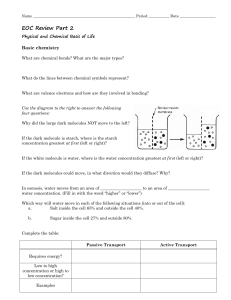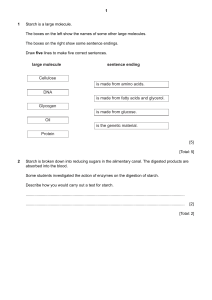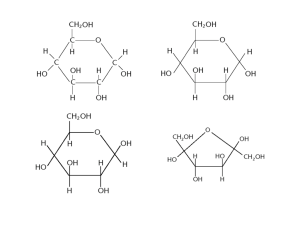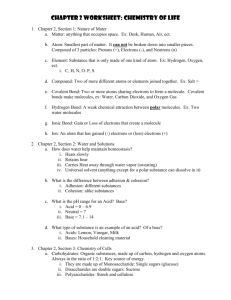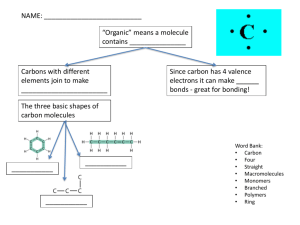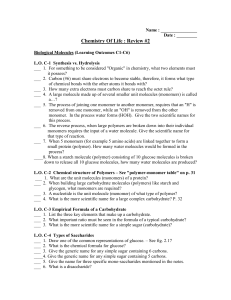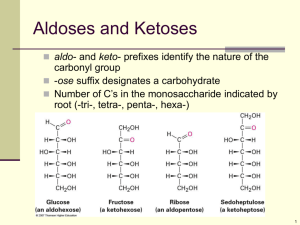EOC Review Part 2 Physical and Chemical Basis of Life Basic
advertisement
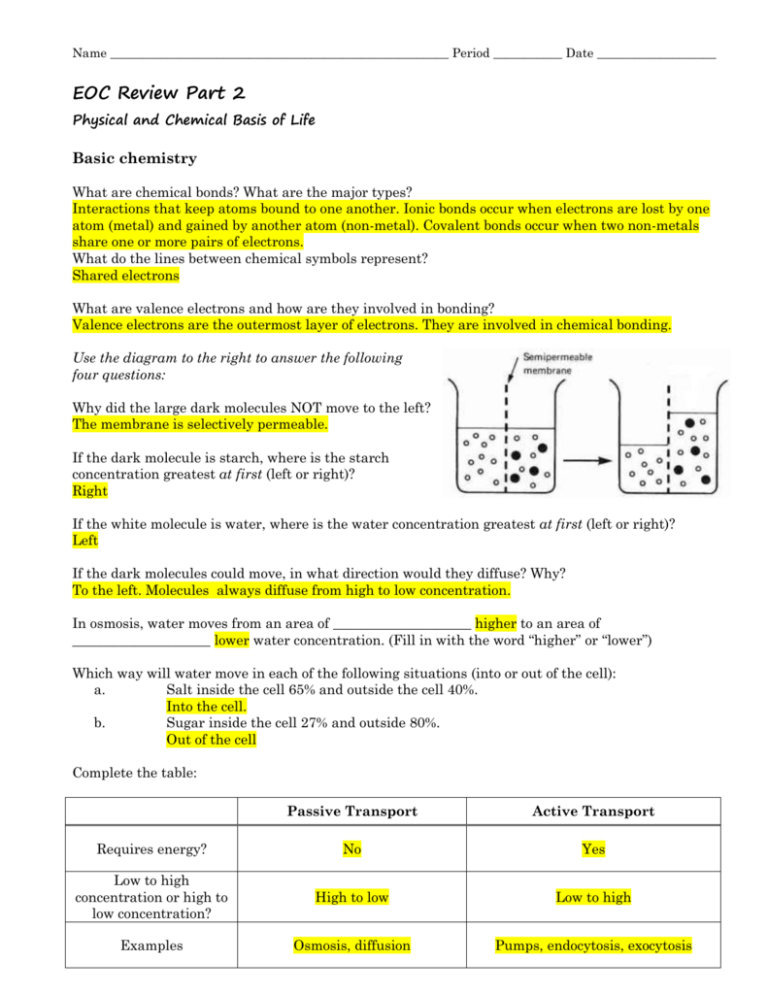
Name ______________________________________________________ Period ___________ Date ___________________ EOC Review Part 2 Physical and Chemical Basis of Life Basic chemistry What are chemical bonds? What are the major types? Interactions that keep atoms bound to one another. Ionic bonds occur when electrons are lost by one atom (metal) and gained by another atom (non-metal). Covalent bonds occur when two non-metals share one or more pairs of electrons. What do the lines between chemical symbols represent? Shared electrons What are valence electrons and how are they involved in bonding? Valence electrons are the outermost layer of electrons. They are involved in chemical bonding. Use the diagram to the right to answer the following four questions: Why did the large dark molecules NOT move to the left? The membrane is selectively permeable. If the dark molecule is starch, where is the starch concentration greatest at first (left or right)? Right If the white molecule is water, where is the water concentration greatest at first (left or right)? Left If the dark molecules could move, in what direction would they diffuse? Why? To the left. Molecules always diffuse from high to low concentration. In osmosis, water moves from an area of ____________________ higher to an area of ____________________ lower water concentration. (Fill in with the word “higher” or “lower”) Which way will water move in each of the following situations (into or out of the cell): a. Salt inside the cell 65% and outside the cell 40%. Into the cell. b. Sugar inside the cell 27% and outside 80%. Out of the cell Complete the table: Passive Transport Active Transport Requires energy? No Yes Low to high concentration or high to low concentration? High to low Low to high Examples Osmosis, diffusion Pumps, endocytosis, exocytosis Macromolecules Complete the tables: Macromolecul es Function(s) Monomer Examples Carbohydrates Short Term Energy Storage, Cell Structures Monosaccharides (glucose, fructose, etc) Starch, Cellulose, Sucrose Proteins Makes up tissues & other body structures (hair, nails); includes enzymes Amino Acids Amylase, Gyrase, Keratin Lipids Long Term Energy Storage, Insulation, Padding Glycerol, fatty acids Oils, fats, steroids, waxes Nucleic Acids Store Genetic Information, Energy Source Nucleotide DNA, RNA, ATP Specific Molecule Specific Function(s) Glucose Simple sugar; energy is converted into ATP energy; monomer of starch, cellulose and glycogen Starch Long term glucose storage in plants Glycogen Long term glucose storage in animals Cellulose Makes up cell walls in plants Enzymes Biological Catalysts; help speed up chemical reactions by lowering activation energy Insulin Lowers blood sugar by causing liver cells to take up glucose and convert them into glycogen Hemoglobin Carries oxygen in the blood DNA Long term storage of genetic information; passed from generation to generation mRNA Transmits DNA code from the nucleus to the cytoplasm where it is read by the ribosome What are some of the functions of the proteins and other molecules found in the cell membrane? Some proteins on the surface are used for detecting materials, channel proteins let certain substances pass through. Cholesterol causes the cell membrane to be more fluid. What is the function of hormones? They are slow acting chemical messengers that control growth, development and responses to the environment. How do hormones travel throughout a body? Circulatory system (blood stream)
